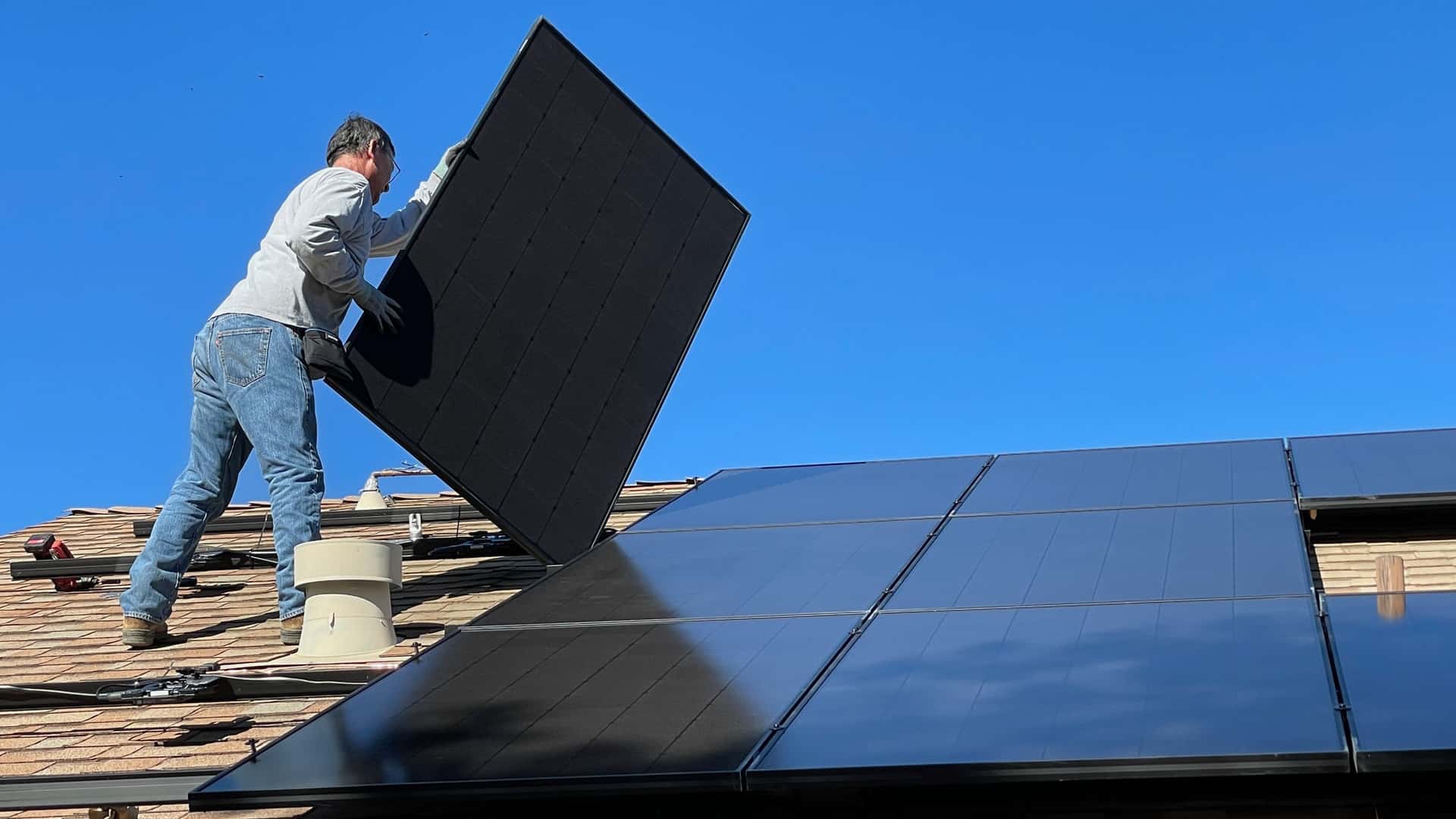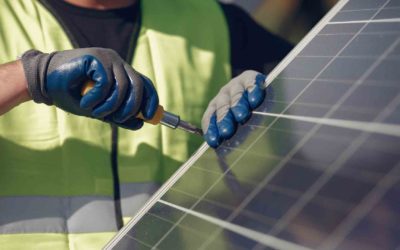Ever wondered about the potential savings from solar panels in Australia? You’re not alone. With the sun-drenched climate, it’s a hot topic for many Aussies.
Solar power isn’t just about being eco-friendly, it’s also about cutting down on those pesky electricity bills. But how much can you really save?
The Benefits of Solar Panels in Australia
Stepping into the world of solar energy is not just about conserving the environment. Certainly, it’s an excellent way to reduce your carbon footprint but that doesn’t quite cover it. You’re probably wondering, what else is there? Besides, who doesn’t appreciate an additional perk?
Solar panels in Australia provide undeniable financial benefits. The savings, that’s what you’re keen to understand, right?
The Australian climate, bathed in sunshine, makes it an ideal place for harnessing solar energy. Remember how it’s said that every cloud has a silver lining? Well, Australia’s weather is a golden lining contributing to substantial savings on your electricity bills.
While the exact savings can depend on various factors like energy consumption, size of your solar system, and your location- an average Australian household can indeed save substantially. An average payback period for your solar investment is around 3 to 5 years. After this time, it’s just pure savings!
But then you’d ask, what about those rare cloudy days? Hold onto your hats because solar panels are not entirely reliant on the sun. Even on overcast days, they still produce electricity through the diffused or indirect sunlight, meaning you’ll still save!
Enough of the suspense. Let’s break this down a bit, according to Australia’s Bureau of Statistics:
|State|Average Annual Electricity Bill|Potential Annual Savings with Solar|
|–|–|
—
|New South Wales|$1,667|$940|
|Queensland|$1,727|$975|
|South Australia|$1,759|$992|
|Victoria|$1,602|$906|
|Western Australia|$1,825|$1,031|
Remember this table is just a rough guide. Your real saving could be even higher if you play your cards right.
Also, isn’t there something satisfying about being in charge of your energy production? With solar, you get to monitor, control and even store your own electricity.
That’s not even mentioning the government rebates and feed-in tariff schemes for surplus power exported back to the grid. These incentives make your investment in solar even more beneficial.
With these impressive savings, you see why solar panels are indeed a bright investment in Australia. And as the cost of solar installation continues to fall, we can only guess that the benefits will keep rising.
Understanding Solar Power Savings
So, you’re keen on investing in solar panels and taking control of your energy production. Understandably, you might be wondering about solar power savings and how it eventually pays off financially. Let’s delve into that matter!
Over time, your solar panels contribute significantly to minimising your operational costs. It’s not something you’d see instantly, the accumulated savings eventually add up. Definitely, the more energy efficient your home, the less solar power you need to produce, optimising your savings further.
Here’s an interesting fact for you: Solar panels can still generate electricity even on cloudy days. They harness diffused or indirect sunlight which means they’re still productive on cloudy days or during winter. While it’s true these panels operate at their peak on sunny days, their cloudy day’s production is nothing to ignore.
Let’s discuss average payback periods. For the majority of households in Australia, solar power systems typically have a payback period of 3 to 5 years. This is the time you need to recover your initial investment through electricity savings. Now, focusing on the long term, think about the lifespan of solar panels. It’s often 25 to 30 years or more, which means two decades or more of pure savings after your initial investment is recouped.
Here’s a snapshot of potential savings:
Year
|
Savings
|
1-5
|
Investment recovery
6-25+
|
Pure Savings
A majority of states in Australia also offer attractive government rebates and feed-in tariff schemes, which only adds cherries to your solar savings cake. These make going solar more feasible and provide extra benefits aside from reduced electricity bills.
So, if you’re considering solar panels strictly from a financial perspective, rest assured they’re a wise investment indeed. Especially in Australia, where the abundant sunlight makes solar power a viable and smart energy choice. The savings are real, tangible, and can be substantial depending on your energy usage and efficiency.
Factors Affecting Your Savings
While we’ve painted a pretty enticing picture of solar savings, it’s vital to realise that your return on investment isn’t set in stone. Various factors will impact how much money you’ll save with your solar power system in Australia. So let’s dive into these elements.
First up is your home’s energy consumption. The bigger your energy demand, the more potential savings you’ll get when you switch to solar. So it’s critical you have a clear handle on your power usage before you plump for solar panels.
Your system size and quality naturally has a massive influence on your solar savings. Your solar installer will help you work out the most cost-effective size for your house based on your consumption patterns. Don’t forget the quality matters! High-end solar panels may have a larger upfront cost, but they offer superior performance, lifespan and, you’ve guessed it, savings.
Local weather plays a significant role too. Even though solar panels can still generate electricity on cloudy days through diffused or indirect sunlight, naturally, the more sunlight you get, the more electricity you’ll generate. So if you reside in an area with abundant sunlight, you’re onto a winner.
On the topic of location, local incentives make a hefty difference to the payback period of your solar investment. Government rebates and feed-in tariff schemes vary across different Australian states. Make sure you’re familiar with what’s on offer in your area, as these incentives can slice years off your payback period.
Finally, the cost of electricity from the grid vs the rate you’re given for the excess solar power you feed back into the grid can significantly swing your solar savings. So it’s well worth shopping around for a decent feed-in tariff rate.
While it’s a handful of variables, having a grasp of these factors will enable you to maximise your solar savings in Australia. With a payback period ranging between 3 to 5 years, investing in solar panels is indeed a bright idea.
Calculating Your Potential Savings
While it can seem daunting to calculate your potential solar panel savings, it doesn’t have to be. A clear understanding of your energy usage habits and the factors discussed prior will get you to a pretty accurate number. Let’s delve into the process.
Step 1: Understand Your Energy Consumption
Your energy bill is your number one tool here. By looking at your current energy consumption, you’ll get a clear picture of what you’re spending now on electricity. Typically, your bill will show your consumption in kilowatt-hours (kWh). This information is critical in determining the perfect size of solar panel system for your home.
Step 2: Determine the Right System Size
After understanding how much energy you consume, you’ll need to decide on the solar panel system size. There’s no one-fits-all answer here because every home is different. Various factors like your roof space, budget and energy needs will dictate the optimal solution.
Step 3: Evaluate Weather Patterns
The amount of sunshine your area receives has a direct correlation with your solar panels’ output. Several online solar calculators can help you estimate your location’s solar irradiance.
Step 4: Review Government Incentives
It’s crucial to check potential government incentives like Small-Scale Renewable Energy Scheme (SRES) credits and feed-in tariffs. These cuts can significantly offset your upfront costs and boost your overall savings.
We’ve created a simple table to help you understand your potential savings:
| Factoring element | Method of Calculation |
|---|---|
| Energy Consumption | Examine your past electricity bills |
| Right System Size | Assess energy needs, roof space and budget |
| Weather patterns | Use online solar calculators |
| Government Incentives | Offset by Small-Scale Renewable Energy Scheme (SRES) credits and feed-in tariffs |
Armed with this information, you’re well on your way to accurately calculating your potential savings. Keep in mind that these figures aren’t set in stone and are subject to change depending on a variety of factors.
Other Financial Aspects to Consider
After being guided through the basics, it’s time to shine a light on the additional monetary elements that can influence your solar power savings. These factors can sometimes be overlooked but have a significant impact on your final calculations.
Cost of Installation: The cost of setting up your solar system is a hefty initial sum that you’ll need to recoup before churning out any genuine savings. It’s crucial to shop around, get a handful of quotes, and don’t be afraid to negotiate the prices.
Duration of Payback: Consider how long it’ll take to recoup the setup costs from your solar savings. The payback period is dependent on the system’s size, your energy usage, geographical location, and the price you paid for it.
Feed-In Tariff: The Feed-In Tariff, or FIT, is the crucial cog in your ‘solar savings’ machine. It’s the rate paid by your energy company for the excess electricity your panels generate and is then fed back into the grid. Rates vary, with each energy provider offering a different amount.
Life Expectancy of the System: The lifespan of a solar system impacts long-term savings. With a typical life expectancy of about 25-30 years for most solar panels, you can calculate savings over this period. However, you might need to factor in potential maintenance costs and efficiency declines over the lifespan.
Government Schemes and Incentives: Don’t forget to check out government aids. Australia’s government has put in place several remarkable incentives and rebates for installing solar panel systems. These can greatly reduce system costs.
Taking these factors into account will give you a broader picture of the potential savings from solar power in Australia. To grasp the full benefits, keen attention to these subtle but essential details is necessary. Knowing the broader implications allows you to work out the best options suited to your specific situation and truly maximize your savings.
Conclusion
So you’ve seen how solar panels can lead to considerable savings. By understanding your energy use, choosing the right system size, and factoring in Australia’s weather patterns and government incentives, you can calculate your potential savings. The cost of installation, payback duration, feed-in tariff, and the lifespan of the system are all key aspects to consider. When you take these into account, you’ll get a clear picture of the true financial benefits of solar power. Remember, these savings aren’t just about money. They’re also about reducing your carbon footprint and contributing to a sustainable future. So it’s not just your wallet that benefits from solar power, but the planet too. Now that’s a win-win situation!
Frequently Asked Questions
1. How can I calculate potential savings from solar panels?
The calculation involves several factors like understanding your energy consumption, determining the right system size, considering weather patterns, and checking government incentives. Don’t forget about costing factors like system cost, feed-in tariff, and payback duration.
2. Why is understanding my energy consumption important?
Your total energy consumption influences the size of the solar system you need. The larger the consumption, the larger the system required, which means higher initial costs but greater potential savings.
3. How does weather impact solar panel savings?
Solar panels generate power based on sunlight availability. Places with more sunshine hours would typically yield more energy and consequently, more savings.
4. What government incentives are available for solar panels in Australia?
In Australia, government incentives like the Small-scale Renewable Energy Scheme (SRES) can significantly offset the upfront costs for installing solar panels. It’s advised to research your eligible incentives.
5. Is cost of installation a significant factor for solar panel savings?
Yes, installation costs can significantly affect the payback period of your solar system. However, over the life expectancy of the system, these costs decrease relative to your savings.
6. How do feed-in tariffs affect my savings?
A feed-in tariff is a payment you receive for any excess solar power that you feed back into the grid. Higher feed-in tariffs lead to quicker payback and increased savings.
7. What is the life expectancy of a solar system?
While the performance of solar panels may slowly degrade over time, most systems can last around 25-35 years, providing long-term savings. However, the inverter may need replacement after 10-15 years.




